Search results for: 'mit'
-
 Scarab with sphinx and Maat
Scarab with sphinx and MaatThe piece from the Ramesside period shows the goddess of truth and justice. Next to her is a name, probably that of pharao Mencheperre, who is famous as Thutmosis III.
Price: on request Leaden sling bullet with thunderbolt relief
Leaden sling bullet with thunderbolt reliefAlmond shaped lead bullet of a slinger. It was part of the equipment of a Greek army from the late 5th to the 2nd century BC.
Price: on request Pair of Roman gold earrings with cameos
Pair of Roman gold earrings with cameosMatching pair in magnificent preservation. With depiction of Medusa. Jewellery of a Roman lady in the early third century.
Price: on request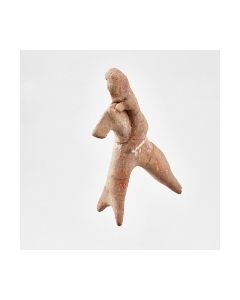 Published Parthian clay horse and rider
Published Parthian clay horse and riderThe clay figurine probably originates in Syria. It dates to achaemenide to parthian times. 6. cent. BC to 2nd cent. AD.
Price: on request Augustus denarius with interesting reverse
Augustus denarius with interesting reverseMercur sitzt auf Felsen, eine Lry spielend. Die Darstellung feiert den Sieg in der Schlacht von Naulochoi. Aus preußischer Generationensammlung, in dieser vor 1895.
Price: on request Rare Roman brick with maker's mark APIONAS
Rare Roman brick with maker's mark APIONASErweitert zu lesen als [C]APIONAS, zivile Großziegelei. Spätantike. Seltene Stempelvariante. Fundort: Wahrscheinlich Trier.
Price: on request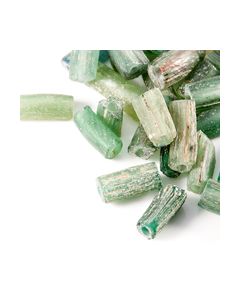 Römische Perlen aus grünem Glas
Römische Perlen aus grünem Glaslängliche Perlen aus grünem Glas in vielen Farbabstufungen. Einzelverkauf, Preis pro Stück, noch 3 Stk verfügbar.
Price: on request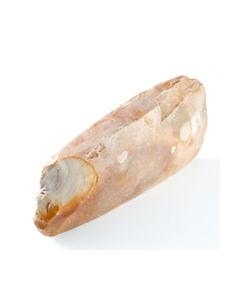 Dünnnackiges neolithisches Beil
Dünnnackiges neolithisches BeilÄltere Trichterbecher-Kultur, Frühneolithikum. Dünnnackiger Beilkopf, schön gefertig und tatsächliches Arbeitsbeil, 17cm lang. 3500 v. Chr. bis 3300 v. Chr.
Price: on request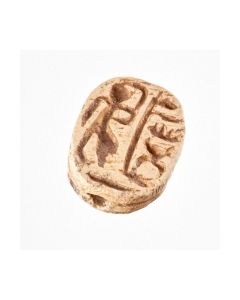 Scarab with cartouche
Scarab with cartoucheThe scarab from the late Ramesside period shows a standing person. A cartouche in front bears the name of pharao Mencheperre, who was famous as Thutmose III.
Price: on request Scarab with magic spell
Scarab with magic spellThe hieroglyphs are of the so called anra design, a magic spell in the ancient Egyptian belief. The scarab is from the 13th to 15th dynasty. It is described in the catalogue of Gautier-Vodoz.
Price: on request Scarab with geometric motive
Scarab with geometric motiveThe motive exhibits two symmetry axes and at least six triangles. A wonderful artistic expression of the highly evolved Egyptian maths. This scarab is described in the catalogue of Irène Gautier-Vodoz.
Price: on request Scaraboid from the Middle Kingdom
Scaraboid from the Middle KingdomThe stamp shows hieroglyphs with a title for the king of Upper and Lower Egypt. This scaraboid is described in the catalogue of Irène Gautier-Vodoz.
Price: on request Cowroid with Ankh and papyrus
Cowroid with Ankh and papyrusThe seal is engraved with the breath of life between two papyrus plants. This scaraboid is described in the catalogue of Irène Gautier-Vodoz.
Price: on request Cowroid with magic spell
Cowroid with magic spellThe hieroglyphs of the anra type are to be interpreted as magical formula. From the Second Intermediate Period of ancient Egpyt. This scaraboid is described in the catalogue of Gautier-Vodoz.
Price: on request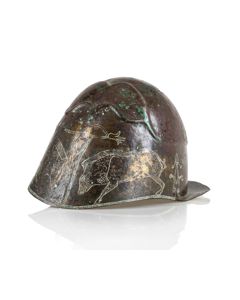 Apulian-Corinthian bronze helmet - ex Axel Guttmann collection
Apulian-Corinthian bronze helmet - ex Axel Guttmann collectionWorth the exhibition in a museum. With fine decoration including large boars. Published by H. Born (1993) and M. Junkelmann (2000). Ex Christie's London and Royal Athena Galleries New York.
€37,000 Roman provincial fibula of the horsemen
Roman provincial fibula of the horsemenThe swastika shaped brooch with horse head terminals was worn by the cavallery in Late Antiquity. In particular by the troops recruited by the Romans from their Pannonian Foederati. It might have been a symbol for strength or designated a military rank.
Price: on request Massive antike Pfeilspitze aus Eisen
Massive antike Pfeilspitze aus EisenQuadratischer Querschnitt, in der Mitte verjüngt. Massiv. Kulturkreis der Kidariten oder Hephthaliten, 5. - 7. Jh. n. Chr.
Price: on request Massive antike Pfeilspitze aus Eisen
Massive antike Pfeilspitze aus EisenKlassische Formgebung, quadratischer Querschnitt, massiv. Für Alter und Material relativ schwache Korrosion.
Price: on request Lot von 10 römischen Münzen aus Rheinländischer Sammlung
Lot von 10 römischen Münzen aus Rheinländischer SammlungDarunter 1 hervorragend erhaltene Bronze des Honorius. Generell sehr gute Erhaltung, schöne Fundpatina. Spätantike Bronzemünzen, Durchmesser 16 - 18 mm.
Price: on request Lot von 10 römischen Münzen aus Rheinländischer Sammlung
Lot von 10 römischen Münzen aus Rheinländischer SammlungDarunter ein Lagertorrevers. Generell sehr gute Erhaltung, schöne Fundpatina. Spätantike Bronzemünzen, Durchmesser 15 - 20 mm.
Price: on request Lot von 10 römischen Münzen aus Rheinländischer Sammlung
Lot von 10 römischen Münzen aus Rheinländischer SammlungSpannend zusammengesetztes Lot. Generell sehr gute Erhaltung, schöne Fundpatina. Spätantike Bronzemünzen, Durchmesser 13 - 21 mm.
Price: on request Antike Pfeilspitze aus Eisen
Antike Pfeilspitze aus EisenMassive, dreiflüglige Pfeilspitze aus Eisen Spitze durch Aufprall plattgedrückt, interessantes Belegstück der antiken Kriegsführung.
Price: on request Extremely rare and perfectly preserved Didius Julian denarius from and old collection
Extremely rare and perfectly preserved Didius Julian denarius from and old collectionSehr selten, der RIC listet lediglich 4 Typen des Didius Julianus in Silber. Erhabenes, sehr ausdrucksstarkes Portrait. Aus Generationensammlung.
Price: on request Keramikschale, Lausitzer-Kultur
Keramikschale, Lausitzer-KulturPreiswertes Schälchen aus der nordeuropäischen späten Bronzezeit bis frühen Eisenzeit. 1200 v. Chr. bis 500 v. Chr.
Price: on request As des Trajan - kniender Daker
As des Trajan - kniender DakerRom, 103 - 111 n. Chr. Sehr schöne, dunkle Patina. Aus Generationensammlung, vom Leibarzt des Prinzen Karl von Preußen im 19. Jh. begründet.
Price: on request Red figure Oinochoe from an old German collection
Red figure Oinochoe from an old German collectionShowing Eros and a female dancer. Excellent condition and brilliant colors, very fine work. 4th century BC.
Price: on request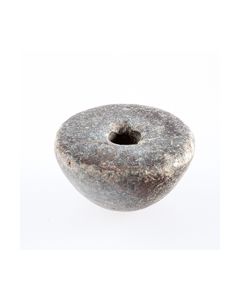 Römischer Spinnwirtel aus Stein
Römischer Spinnwirtel aus SteinAntiker Spinnwirtel für Handspindel, aus dunklem Naturstein. 1. bis 3. Jh. n. Chr., schöne Erhaltung.
Price: on request Seltene steinzeitliche Klingensichel
Seltene steinzeitliche KlingensichelFrüher Sicheltyp aus dem neolithischen Nordeuropa, vermutlich als Erntesichel verwendet. 4000 v. Chr. bis 2800 v. Chr., Trichterbecher-Kultur.
Price: on request Glass flask in bowl
Glass flask in bowlThis uncommon glass object from Roman times consists of a household glass flask that has been set in a glass bowl. It is a mystery if it has been made for a practical purpose or if it is a trial piece of a glassblower.
Price: on request Egyptian amulet of Shu
Egyptian amulet of ShuGod of the air and the sun. The highly stylized figurine shows the ancient Egyptian god on his knees, the arms raised towards the sun. From a British private museum.
Price: on request Small Roman jar from Lopodunum
Small Roman jar from LopodunumNicely preserved piece. Found in Ladenburg, Baden-Wuerttemberg, Germany.
Price: on request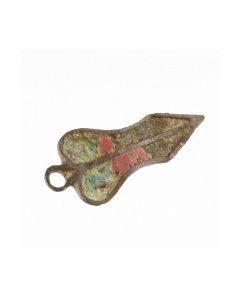 Roman brooch in dagger shape
Roman brooch in dagger shapeInteresting variant of the more common sandal brooch. The colourful enameled brooch has been made in the northern Roman provinces. 2nd cent. AD.
Price: on request Egyptian amulet of Shu
Egyptian amulet of ShuGod of the air and the sun. The highly stylized figurine shows the ancient Egyptian god on his knees, the arms raised towards the sun. From a British private museum.
Price: on request Spoked disc brooch from Roman Britain
Spoked disc brooch from Roman BritainThis is an extremely rare variant native to Roman Britain. Hattatt mentions that only 13 specimen of this type are known to exist.
Price: on request Roman bronze from famous "Museum fuer Morgenlandfahrer"
Roman bronze from famous "Museum fuer Morgenlandfahrer"Massive bronze figurine of a dancing boy, beautiful dark patina, 1st-2nd century AD
Price: on request Spear head from famous Guttmann collection
Spear head from famous Guttmann collectionMassive, perfectly preserved piece, beautiful patina. Inventory number "AG 167c" from famous Axel Guttmann collection in shaft.
Price: on request

